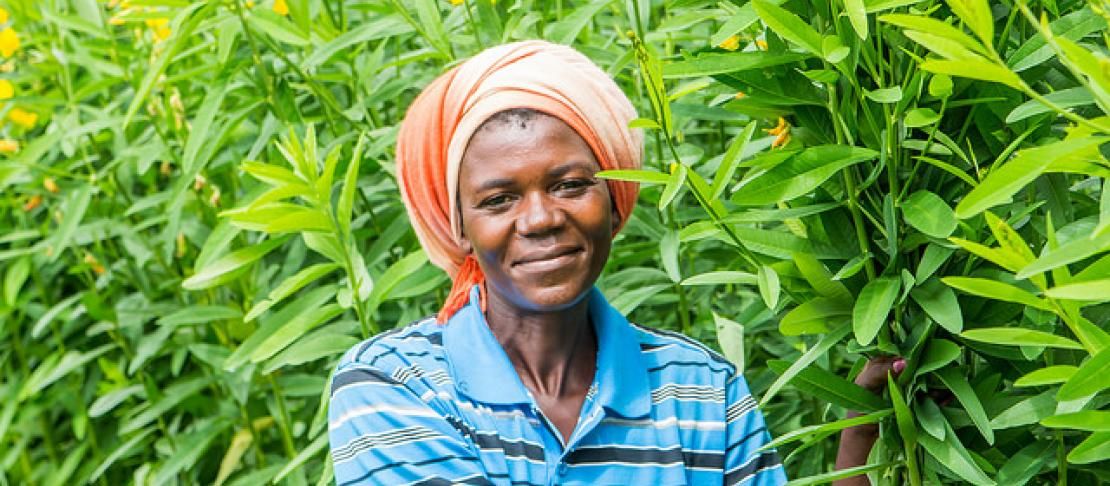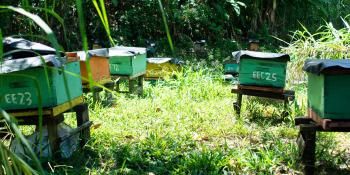New book chapter addresses the links between gender, climate change and agriculture

When it comes to the impacts of climate change on agriculture, men and women have different needs and priorities.
In the recently published Climate-Smart Agriculture Manual, a chapter titled “Gender and Social Inclusion,” authored by Dr. Sophia Huyer and Dr. Mary Nyasimi, both with the CGIAR Research Program on Climate Change, Agriculture and Food Security (CCAFS), examines gender and climate change, and offers recommendations for mainstreaming gender in policy and climate-smart agriculture (CSA) activities in Zimbabwe.
CSA seeks to improve income and food security in the face of climate change by increasing agricultural productivity through sustainable and resilient measures. The ability to adopt CSA tools and practices, however, is not equal across gender and social lines. Removing gendered barriers to CSA is increasingly important as climate change and population growth threatens global food security and development goals. For instance, if men and women had equal access to resources, agriculture yields would increase by an estimated 20-30 percent.
Across much of the developing world, women are highly dependent on natural resources to earn an income and feed their families. This reliance on agriculture means women are especially vulnerable to climate change and could greatly benefit from CSA technologies and practices. In Zimbabwe, however, even though women make up 70 percent of the agriculture labor force, their ability to adopt CSA tools and practices is limited by a number of constraints. For example, there are often gender disparities in access to financial resources, such as credit and capital. Women often miss out on extension services and are less likely than men to own land.
No agricultural technology or practice is gender-neutral." - Gender and Social Inclusion, Climate-Smart Agriculture Manual for Agriculture Education in Zimbabwe
Further, as agriculture labor is divided by gender norms, men and women perceive climate change differently. Research from Lushoto, Tanzania shows men and women have different priorities when it comes to preferred CSA practices. For instance, female-headed households are less likely to own land and are, therefore, limited in their ability to take advantage of long-term CSA strategies. Additionally, women are more likely to manage household crops and small ruminant livestock (sheep and goats), compared to men’s management of cash crops and large livestock. This division means men and women have different CSA needs. CSA policies and activities must take these differences into consideration or risk exacerbating gender-based inequities.
The chapter offers a number of recommendations for integrating the needs of women, and other marginalized groups, into climate change policies and practices. One place to start is gendered data collection with an intersectional lens. As women and their traditional responsibilities, such as managing household gardens, are often overlooked, the collection of sex-disaggregated data can reveal to researchers and policymakers the full extent of women’s activities and their impact.
As many CSA strategies, such as manual weeding, can overburden women, it is important to engage women and other vulnerable groups in all stages of developing and promoting CSA solutions. The inclusion of women in this process can result in innovative strategies that are more likely to be adopted. For instance, in Nyando, Kenya, members of the Obinju Women’s Group took on the issue of late seasonal rainfall. Using a combination of cell phone technologies, like text messaging, and CSA approaches, the group developed an irrigation systems that reduces their reliance on rain-fed agriculture and began a combined savings and loan portfolio with other farmers’ groups in the area.
Gender must also be considered in education and information access. While research indicates both men and women value climate and weather information, they value different types of information and channels. Women tend to rely on informal networks and young people prefer the latest forms of information and communication technologies (ICTs), such as cell phones. CSA programs looking to engage women may benefit from promoting their work through less traditional communication mediums. A gendered approach must also be considered in agriculture curricula in order to prepare the next generation of agriculture professionals to integrate gender into their work.
Finally, women, the youth, and other marginalized groups must be incorporated across all aspects of CSA policy formation and implementation, including gender-responsive budgeting, in order to be truly inclusive. The active participation of these groups can help scale up CSA and make it a truly useful practice for the most vulnerable members of society.
Read more
- Responding to Climate Related Risks to Address Food Insecurity in Nyando, Kenya
- Journal article: Adoption and Dissemination Pathways for Climate-Smart Agriculture Technologies and Practices for Climate-Resilient Livelihoods in Lushoto, Tanzania
Kathlee Freeman is a communications consultant with the CGIAR Research Program on Climate Change, Agriculture and Food Security (CCAFS).



